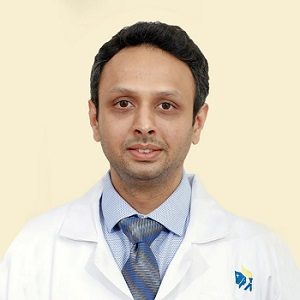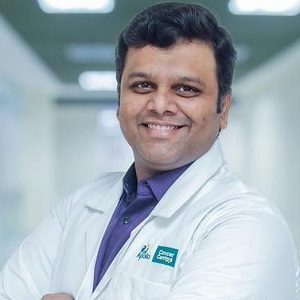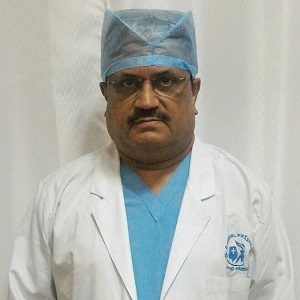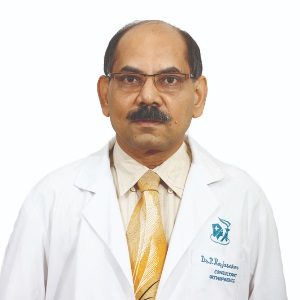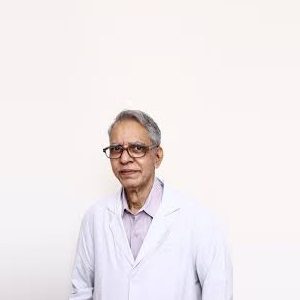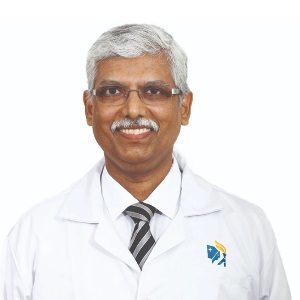Best Limb Lengthening Surgery Doctors in India
- Orthopedic Surgeon, Chennai, India
- Over 12 years’ experience
Profile Highlights:
- Dr. Kunal Patel consults on Orthopedics related problems at the Apollo hospitals of Chennai.
- He was part of the team which set Limca’s World record of Highest Joint Replacement Surgeries in March 2015.
- Dr. Kunal Patel is well-trained in Asia’s first and only Brainlab Arthroplasty Computer Navigation Orthopedic suite and has completed several fellowships related to his field.
- Orthopedic Surgeon and Spine Surgeon, Chennai, India
- Over 12 years’ experience
Profile Highlights:
- Dr. Madhu Kiran Yarlagadda is an orthopedics – consultant specializing in Joint and spine surgery and works at the Apollo hospitals of Chennai.
- Dr. Madhu Kiran Yarlagadda’s team carried out Robotic Spine Surgery for the first time in South-East Asia and performed Endoscopic Transforaminal Spine Surgery in Chennai.
- He treats spine diseases and has the facilities and expertise to perform robotic spine surgery. Along with that, he treats patients with joint and other orthopedic issues.
- Orthopedic Surgeon, Chennai, India
- Over 16 years’ experience
Profile Highlights:
- Dr. Arun Kannan is a well-known joint replacement surgeon at the Apollo Hospitals, Chennai.
- In his 16 years of experience doing joint surgeries and treating orthopedic issues, Dr. Arun Kannan has worked in the US as well as India and has gained enough trust and recognition from his patients.
- He has been excellent in his academics as well as practice because of which he received prizes and appreciation in both.
- Orthopedic Surgeon, Chennai, India
- Over 40 years’ experience
Profile Highlights:
- An Orthopedic doctor by profile, Dr. Gopala Krishnan has around 40 years of experience in his field.
- After his initial studies in medicine in Chennai, Dr. Gopala Krishnan moved to the US to pursue M.Ch in Orthopedics in 1984.
- His experience and dedication have helped him gain recognition in the field and build trust among patients.
- Orthopedic Surgeon, Chennai, India
- Over 24 years’ experience
Profile Highlights:
- Dr. Rajasekar P is an experienced orthopedist with 24+ years of experience.
- He treats and consults patients with problems with Joints, fractures, osteoporosis, Spine injuries, etc.
- He is an MBBS and DNB qualified doctor and practices at Apollo hospitals of Chennai.
- Orthopedic Surgeon, Chennai, India
- Over 50 years’ experience
Profile Highlights:
- Dr. Uma Chandran S specializes in orthopedics and is a veteran surgeon at Apollo Hospitals of Chennai.
- He has spent more than 50 years in the field of orthopedics and is believed to be one of the best orthopedists in Chennai.
- He is also known for his expertise in bone replacement surgery, spine movement, fracture treatment, etc.
- Spine Surgeon and Orthopaedic Surgeon, Chennai, India
- Over 18 years’ experience
Profile Highlights:
- Dr. Muralidharan Venkatesan is a consultant in spine surgery from Chennai.
- He provides comprehensive cervical (neck), thoracic (upper back), and lumbosacral (lower back) conditions treatment.
- Dr. Venkatesan pursued MBBS, MRCS, and a fellowship FRCS and shifted his specialization to spinal surgery.
- Dr. Venkatesan has his papers published in several journals.
- Orthopedic Surgeon and Spine Surgeon, Chennai, India
- Over 23 years’ experience
Profile Highlights:
- Dr. Ravi Venkatesan is a spine surgery specialist from Chennai, Tamil Nadu.
- His experience in spine surgery, orthopedics, and spine deformity surgery date back nearly 23 years.
- Dr. Venkatesan has performed several surgeries and has been an active member of various orthopedics groups.
- Many organizations have recognized his service and have awarded him for his dedication.
- Orthopedic Surgeon, Gurugram, India
- Over 10 years’ experience
Profile Highlights:
- Irfan Banday is a brilliant young orthopedic surgeon with over 10 years of experience handling trauma surgeries and ortho problems.
- Irfan received Fellowship in Knee Arthroscopy and Arthroplasty and Shoulder and Upper Limb Arthroscopy, Arthroplasty & Reconstructive Surgery.
- He manages simple & complex fractures, Reconstructive Surgeries of the Knee, Shoulder, Upper limb, and complex tendon transfers.
- Orthopedic Surgeon, Gurugram, India
- Over 18 years’ experience
Profile Highlights:
- Sandeep Chauhan is one of the best orthopedic surgeons and an expert in managing complex fractures, even in children, soft tissue injuries, septic arthritis, and osteomyelitis.
- He performs fracture reconstructions; and arthroplasty procedures like surface replacements, cemented and un-cemented THR, Total Knee Replacement, musculoskeletal infections, UKA knee, hip, shoulder, & elbow replacements.
Best Limb Lengthening Surgery Hospitals in India
Limb Lengthening Surgery
Limb Lengthening is a surgical procedure where the bone in the leg is separated and distracted or pulled apart so that new bone can form in the gap, resulting in an increase of the length. This procedure is mainly recommended for patients suffering from leg deformities or stunted growth.
The bone, if broken or fractured regenerates itself over time, and the same tactical method is used along with external and internal medical assistance to conduct the limb lengthening surgery.
Technique used in Leg Lengthening
The principle for leg lengthening surgery is based on distraction osteogenesis where distraction stands for pulling apart and osteogenesis stands for formation of new bone.
The device used for the lengthening process is usually called a fixator and primarily, there are two types, namely, the Internal and the External Fixator. The Internal Fixators are implanted in the bone, inside the body attached to the marrow cavity of the bone like a brace while the external fixators are attached to the bone outside the body with the help of wires and pins.
Indications for Limb Lengthening Surgery
Limb Lengthening surgery is usually recommended in case of certain leg deformities but other primary causes for it can be-
- Trauma to the skeletal structure of the limb that results in shortening or deformity of the leg
- Congenital Limb length disorder
- Chronic infection of the bone or joints in the limb
- Pediatric hip disorders
- Soft tissue scarring
- Cosmetic enhancements
Symptoms for leg discrepancy varies from patient to patient. While in some patient the difference in the leg length can be visibly noticed, others might walk with a limp. In other patients, limb length issues may start with lower back pains or right after a serious leg trauma or injury.
Diagnostic Tests needed
Limb length differences at birth or visible length differences can be diagnosed at sight. However, before recommending the surgery, your doctor might ask you to attend some physical examinations to determine the root cause of the problem. Apart from X-Rays and Sonograms, or use a physical diagnostic method known as the Gait Analysis to determine the exact reason for this deformity. For detailed imaging diagnosis, doctors may even prescribe a CT Scan of the limbs.
Limb Lengthening Surgery
The surgical procedure is usually based on factors like the cause or size of the discrepancy or the patient’s age, reaction to medical procedures before or if the surgery is actually required or not. Because there are complications involved in the limb lengthening surgery, the medical team first determines if the condition can be treated in a non-surgical method. If the leg discrepancy is minute or negligible, the doctors might put the patient on observation to diagnose whether the condition is growing or not. Non-surgical methods also include wearing specialized shoes that provide an external lift to help ease activities like walking.
However, if the discrepancies are too prominent, the surgical procedure is suggested to stop or halt the limn differences.
Preparation for surgery
There are no exclusive preparation methods for this surgical procedure. However, patients are requested to help their medical team with a detailed breakdown of their past medical history including past or ongoing medications which includes herbal supplements, vitamins, homeopathy medicines, OTC or NSAIDs. Patients are also requested to ask their healthcare provider for any additional dietary regulations that they should follow before the surgery.
Explanation Video
Procedure
The surgery is performed under regional or general anaesthesia to avoid pain or discomfort during the surgery.
The lengthening procedure begins with the osteotomy process where the surgeon makes a small incision to reveal the bone to be lengthened. The bone is then cut and stabilized with internal and/or external fixators.
The patient will be requested to stay back in the hospital for 2-3 days and the rehabilitation will start after the day of the surgery where the medical team will help the patient with activities like getting out of bed, moving the joints, walking through crutches, etc. The lengthening process, however, starts a few weeks after the surgery has been performed.
Post-Operation Recovery
The surgical procedure is quick but the main lengthening process is based on the recovery from the surgical procedure which is usually done over two elaborate phases.
Distraction Phase
The actual limb lengthening procedure is done in the Distraction Phase where the internal or external fixators gradually lengthens the bone, 1 millimetre each day. The patients are usually at their best phase at this time since the bone are still distracted. Over the course of recovery, the muscles around the distraction point strengthen and movement or flexibility starts becoming harder and harder. The gap between the two distracted bone starts regenerating with new bone tissues.
The patients are requested to strictly follow therapy every single day since this is crucial for the lengthening process. Physiotherapists and the patient’s caregivers are both requested to conduct weekly and weekend physical therapy. The lengthening process works on how effective the therapy is. More the therapy the better the lengthening.
Consolidation Phase
On reaching the desired length, the patients reach the consolidation phase where the fixators are no longer adjusted for lengthening. The fixators however still remain in the leg as the newly formed bone now hardens throughout the course. Most patients are requested to stay back in the hospital during the distraction phase but they can be discharged during the consolidation phase based on their recovery progress. The bone healing process, however, is closely monitored by the medical team through image diagnostic tests such as X-rays or CT Scans.
At Home Care & Precaution
Caregivers are asked to constantly help the patient throughout the recovery process. From helping them with their daily activities to helping them through therapy, both physiotherapists and at-home caregivers have to spend a substantial amount of time helping the patient undergo the lengthening, hardening of the newly formed bone, and the recovery process in total.
Patients are requested to consult the doctor regarding showers, daily activities, re-joining work or for special diets to increase the recovery rate.
FAQs
How long do I have to stay in the hospital after the limb lengthening process?
The hospital stay after the surgery can be for 2-3 days but most patients opt to stay back in the hospital when they are going through their distraction phase. Patients can go home once they enter the consolidation phase.
What is the recovery time for leg lengthening surgery?
The lengthening process varies from patient to patient based on their reaction to therapy, immune system, and more. Generally, the recovery time period can be between 12-14 weeks from the day of surgery.
Are there any risks associated with the leg lengthening surgery?
Even though rare, risks such as infection during the new bone formation process has been documented.
When can I remove the fixators from my leg?
Every patient’s recovery phase will differ from one another. Usually, the pins or the fixators are removed when the patient is nearing the end of his/her consolidation phase.
What is the success rate for leg lengthening procedure?
Limb lengthening surgeries have over 90% success rate with expert surgeon.

